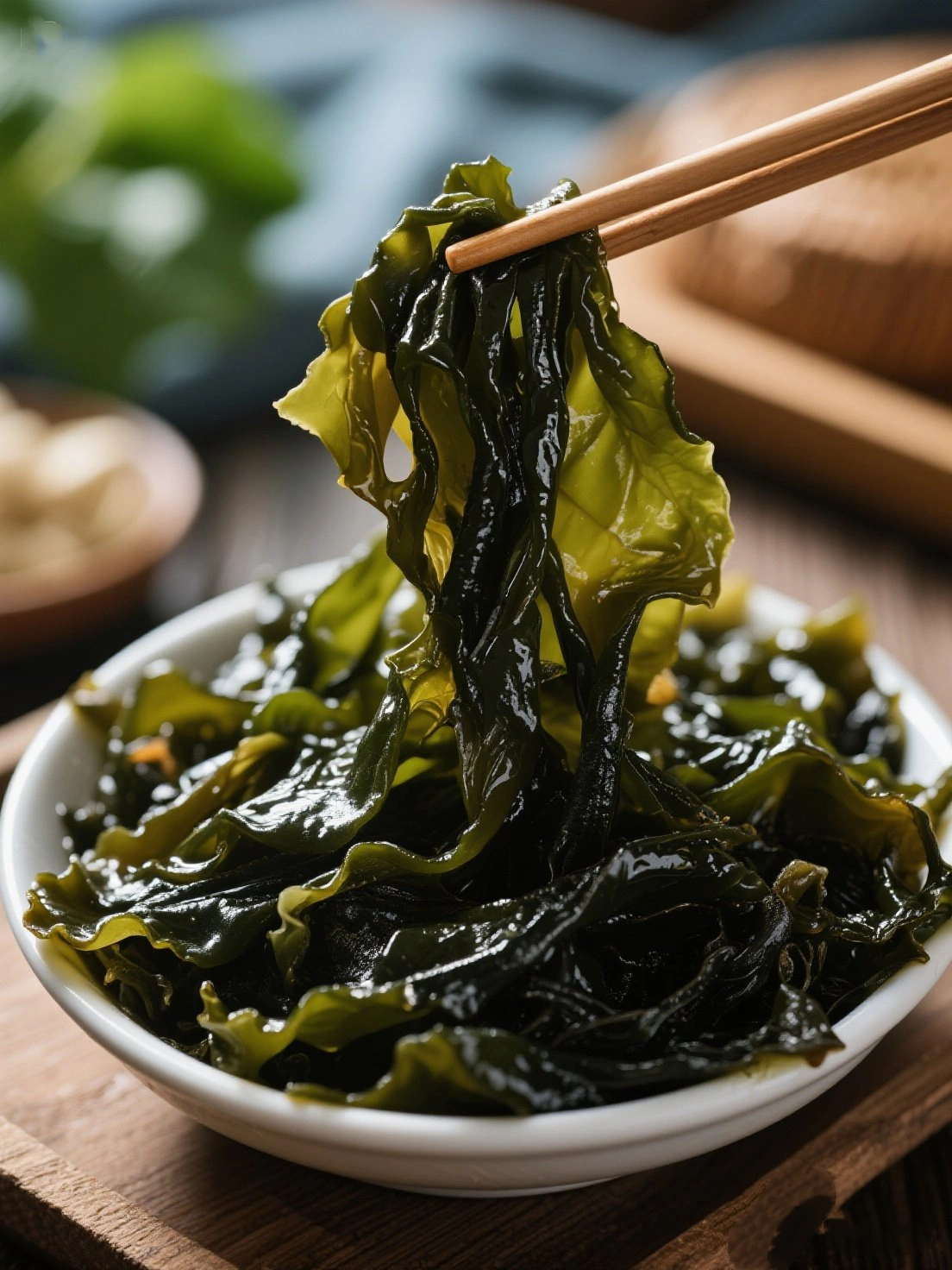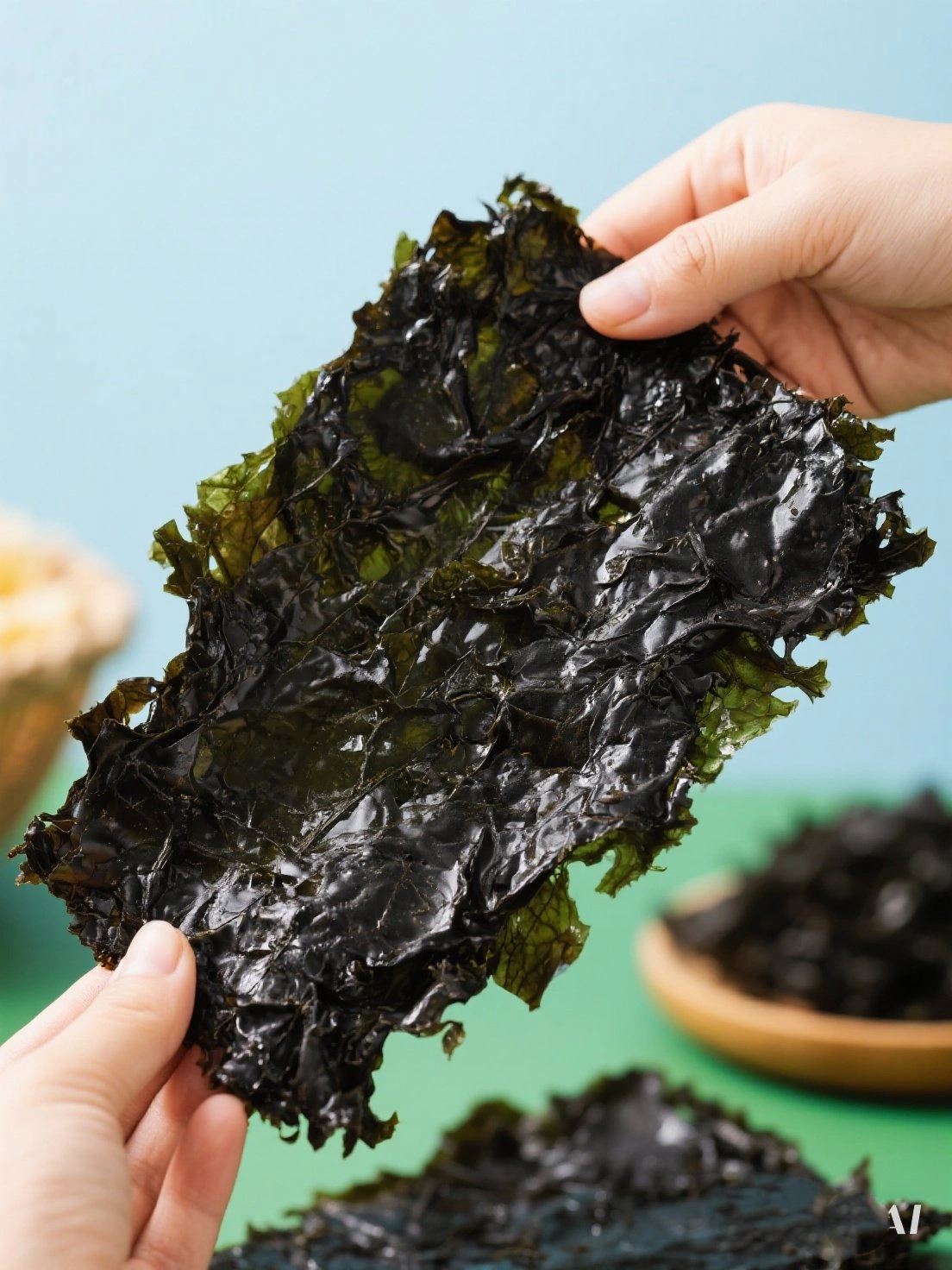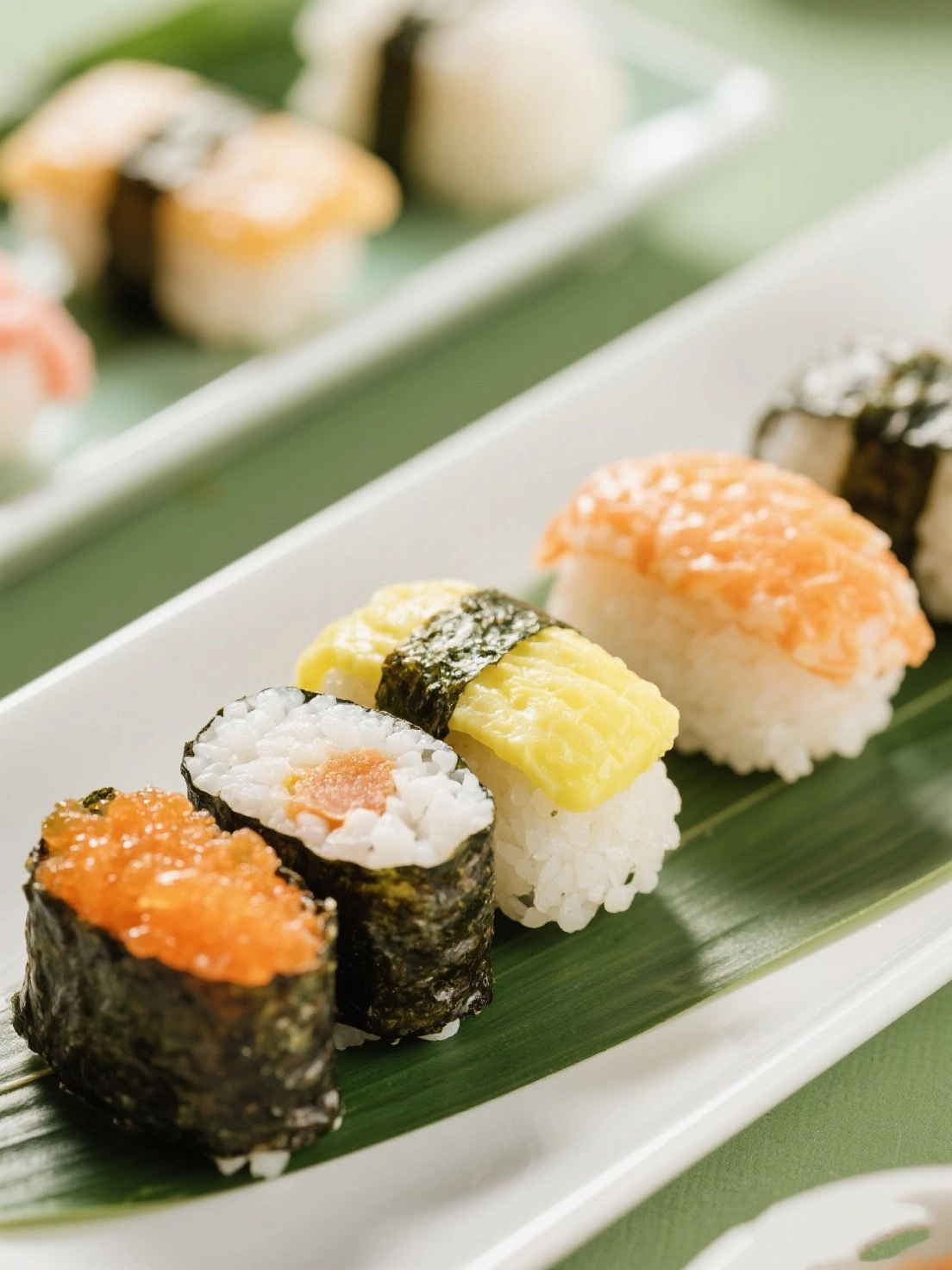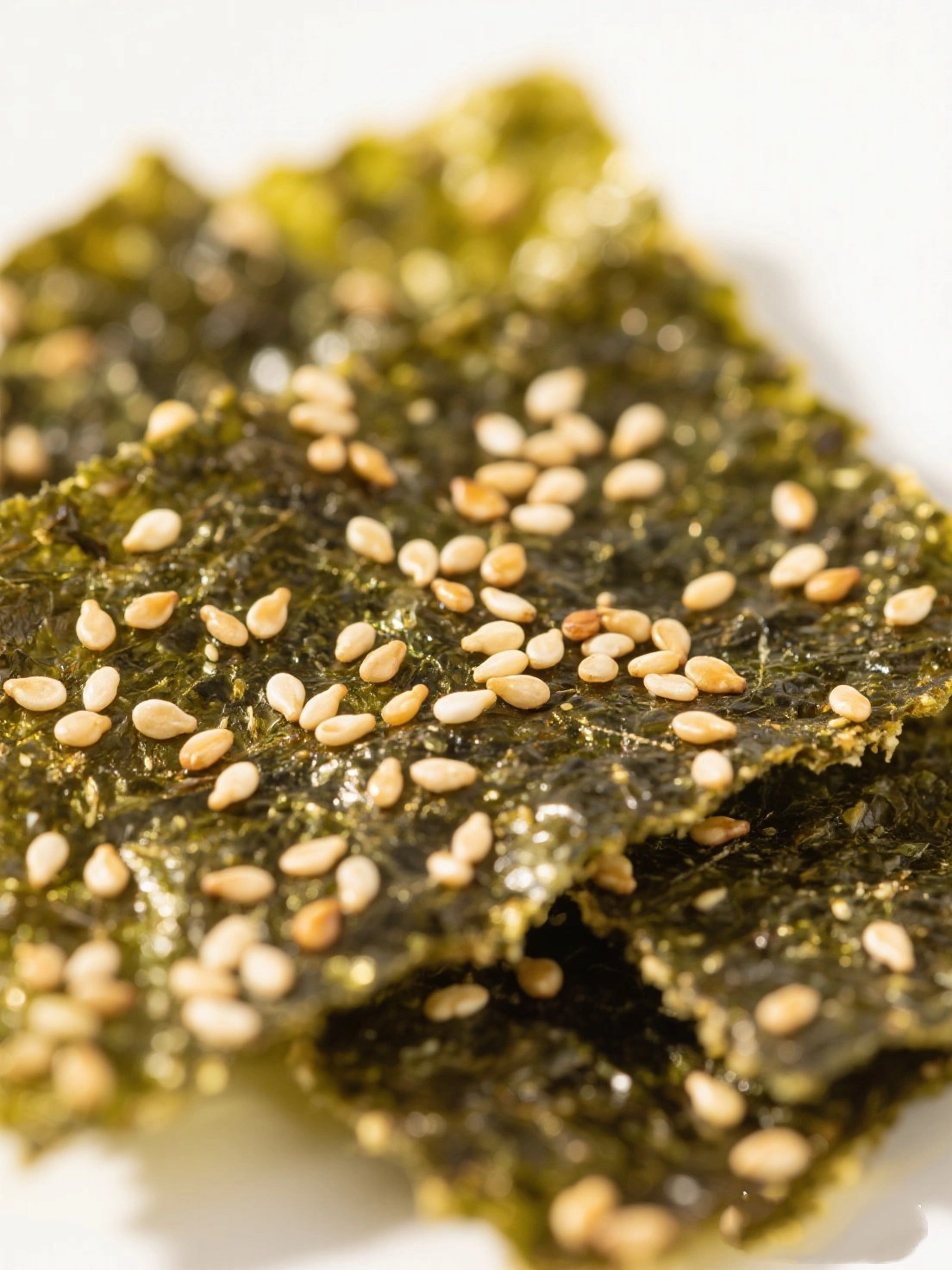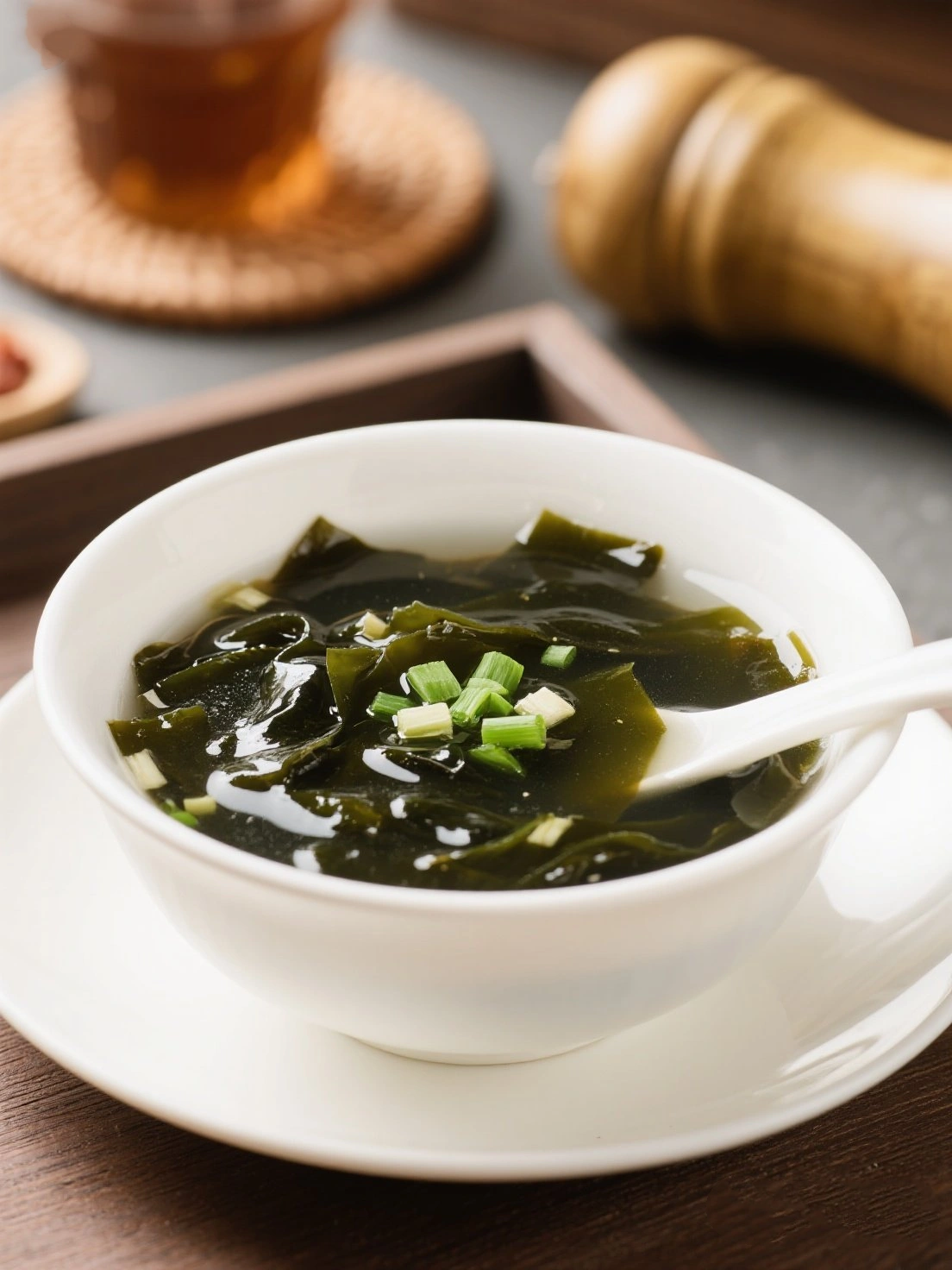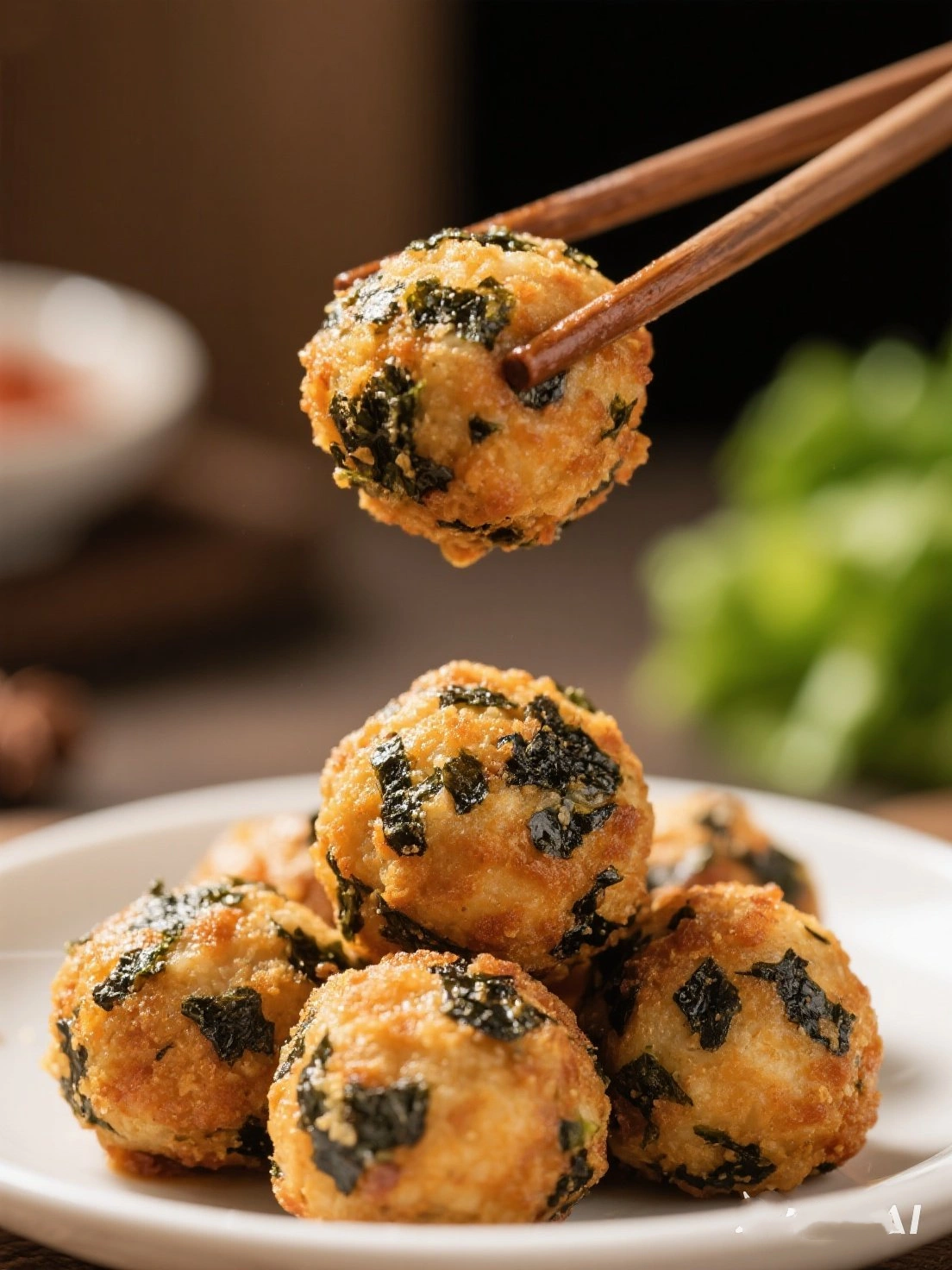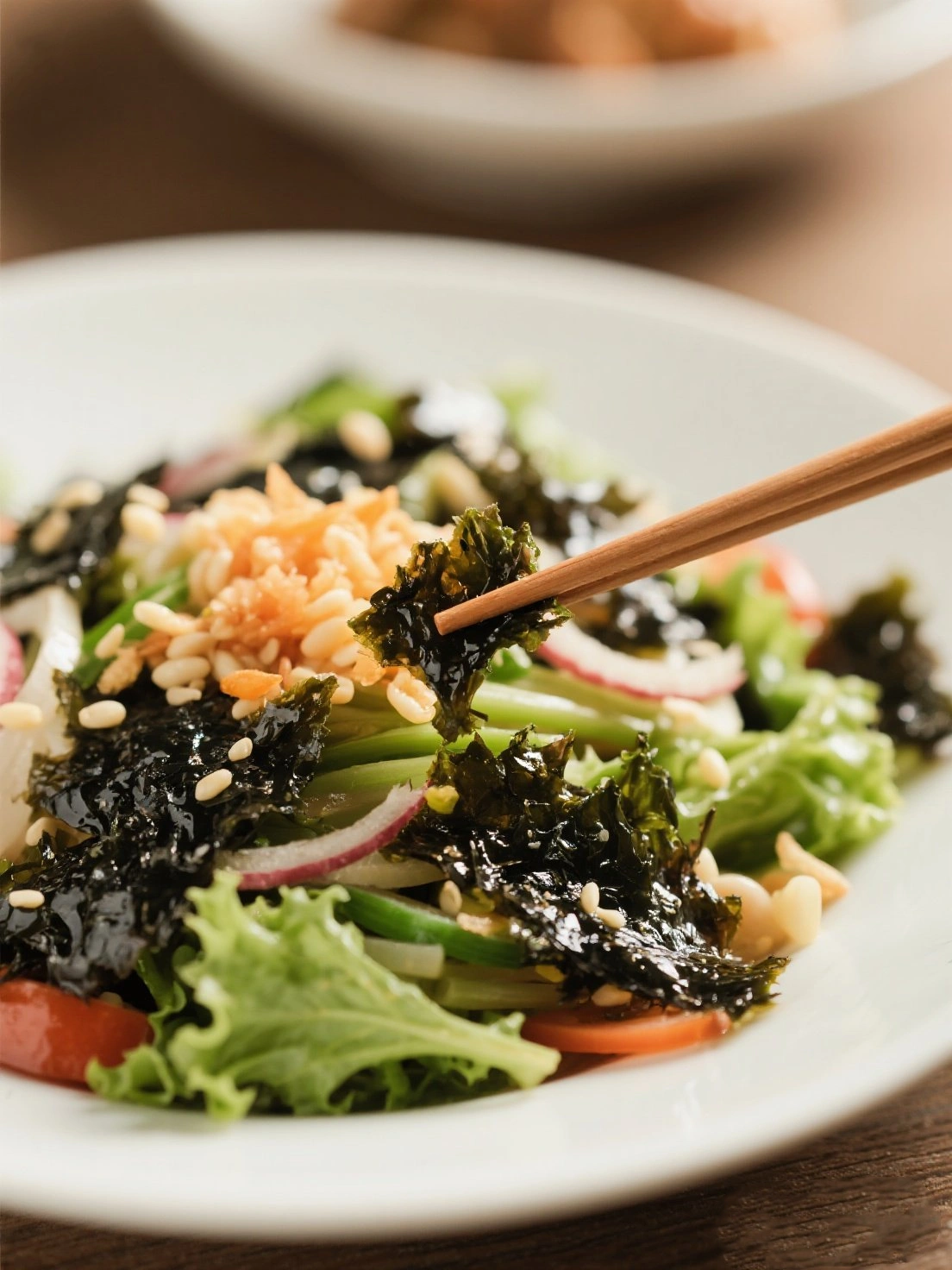Nori (Seaweed), a type of edible seaweed (Porphyra species), has been consumed in East Asia for over 1,300 years. The earliest records of nori cultivation date back to 8th century Japan, where it was originally scraped off rocks and formed into paper-thin sheets. China and Korea also have long histories of nori consumption, using it both as food and medicine.
Modern nori production began in Tokyo Bay during the Edo period (1603-1868), with the development of the "hoshi-nori" drying technique. Today, Japan produces about 350,000 tons annually, followed by China and Korea. There are several grades of nori:
- Gold Grade: Highest quality, smooth texture, deep color
- Silver Grade: Slightly thicker, good for sushi
- Green Grade: Thicker still, often used for snacks
- Red/Black Grade: Lowest grade, used for seasoning
